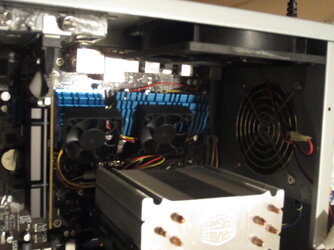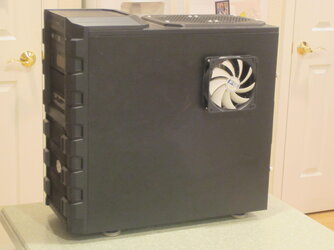Yes, keep increasing the CPU Host Control frequency. We want to get to 250 mhz so that your RAM speed is back up to the full 1600 mhz. The Thuban core integrated memory controller (IMC) usually is good for 1600 mhz with no problem. By the way, CPU-z reports RAM frequency at half of what you would expect because it is reporting the RAM bus frequency rather than the effective DDR3 speed. So when CPU-z is reporting 800 mhz, for instance, it would be 1600 mhz in DDR3 equivalents. That confuses a lot of people. The first "D" in DDR stands for "Double" (Double Data Rate).
When you first fail the Prime95 stress test, add .025 to the vcore and retest. This will increase temps a bit. Pay close attention to the CPU socket temp (TMPIN2) as it's starting to climb. 65-70c would be the highest you want that one to go and 55-60c on the core temps. At least these typically are threshold numbers where we start to see heat-related instability. With top end air cooling you can usually get the 1100T to 4.0 ghz or greater on reasonable voltage. But I'm not sure your CPU cooler qualifies for top end. An example of top end air is the Noctua DH14.
By the way, please take some time to create a "Sig" so that we have a thumbnail sketch of your system details, one that travels with every post you make. Go to Quick Links at the top of the page and then Edit Signature. Since you have a gold star under your name now you have access to this feature. Include info about your CPU, cooler, motherboard, RAM, PSU, video card, OS and case make and model.








